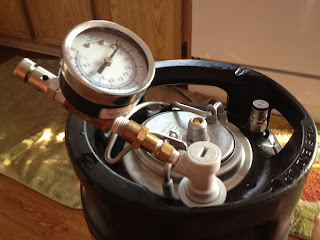Dave70
Le roi est mort..
- Joined
- 29/9/08
- Messages
- 5,596
- Reaction score
- 3,279
Some or the points raised in the surprisingly controversial 'infections' thread about oxygen badness have caused me to have a think about doing something I once thought about doing then couldn't be arsed with, albeit for different reasons, that is, basically attaching a spunding valve to the gas post of your corny and using it as a fermentation vessel.
Like this.

I'm not so much interested in it for the the more traditional reasons to do with ester production, quicker fermentation, self carbonation and reduction of fusel alcohols - though who wouldn't want that - more so when I walked into the garage this morning, I could smell the imperial IPA bubbling away in the brew fridge before I even opened the door. All that delicious aroma just wafting away.
No doubt the the chemistry is more complex than that, but is there any reason or better still, evidence, the think this approach would help preserve flavor?
I faintly recall a post about this eons ago but cant remember by who. probably moved on by now anyway. Or banned.
Like this.

I'm not so much interested in it for the the more traditional reasons to do with ester production, quicker fermentation, self carbonation and reduction of fusel alcohols - though who wouldn't want that - more so when I walked into the garage this morning, I could smell the imperial IPA bubbling away in the brew fridge before I even opened the door. All that delicious aroma just wafting away.
No doubt the the chemistry is more complex than that, but is there any reason or better still, evidence, the think this approach would help preserve flavor?
I faintly recall a post about this eons ago but cant remember by who. probably moved on by now anyway. Or banned.





